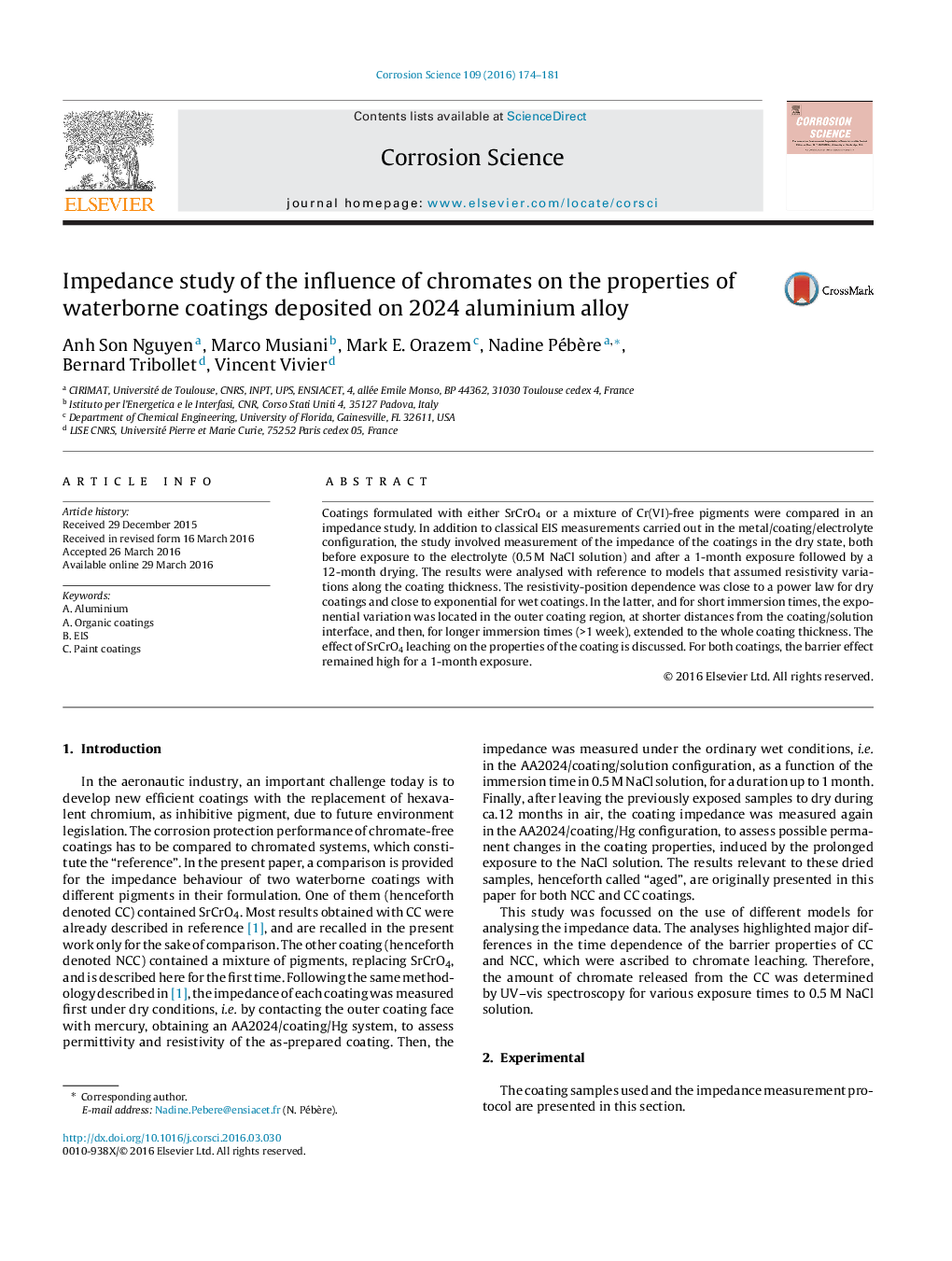| Article ID | Journal | Published Year | Pages | File Type |
|---|---|---|---|---|
| 1468403 | Corrosion Science | 2016 | 8 Pages |
•Impedance of chromated and non-chromated coatings modelled in dry and wet conditions.•Resistivity variations along the coating thickness assumed to analyse the data.•Chromates leaching significantly affect the properties of the coating.•Overall impedance of the systems close to each other but resulted from different contributions.
Coatings formulated with either SrCrO4 or a mixture of Cr(VI)-free pigments were compared in an impedance study. In addition to classical EIS measurements carried out in the metal/coating/electrolyte configuration, the study involved measurement of the impedance of the coatings in the dry state, both before exposure to the electrolyte (0.5 M NaCl solution) and after a 1-month exposure followed by a 12-month drying. The results were analysed with reference to models that assumed resistivity variations along the coating thickness. The resistivity-position dependence was close to a power law for dry coatings and close to exponential for wet coatings. In the latter, and for short immersion times, the exponential variation was located in the outer coating region, at shorter distances from the coating/solution interface, and then, for longer immersion times (>1 week), extended to the whole coating thickness. The effect of SrCrO4 leaching on the properties of the coating is discussed. For both coatings, the barrier effect remained high for a 1-month exposure.
